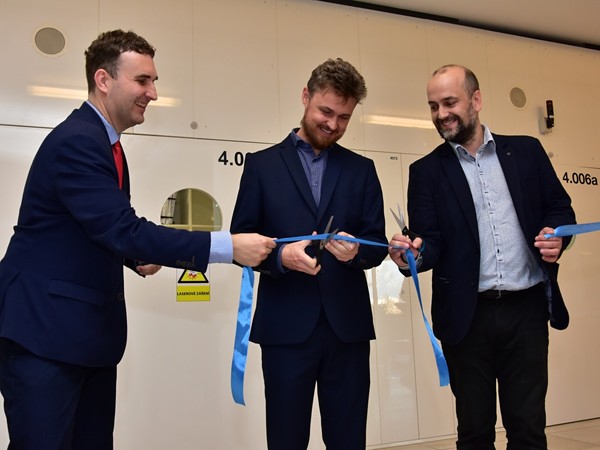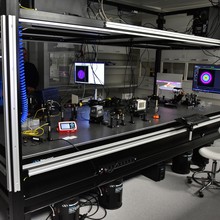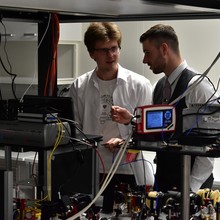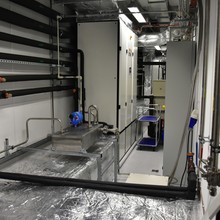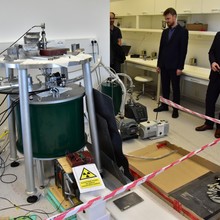New cutting-edge devices and laboratories that open the door to conducting the most demanding experiments in optical, material, nanotechnological, biochemical, and biophysical research are available to students and scientists at the Palacký University Faculty of Science. Thanks to funding from the Operational Programme Research, Development and Education (OP RDE) in the total amount of €6,250,000, more than fifty scientific devices have been purchased and four physical laboratories have been completely modernised.
The new research infrastructure will primarily serve doctoral students. “The modern laboratories we have built are taking us forward in the field of instrumentation. It will allow us to keep in touch with the world leaders and to carry out experiments that have not been physically possible in our country. It is a strategic project of our faculty, focused on the support and development of doctoral studies,” said Jaromír Fiurášek, Head of the Department of Optics and main investigator of the OP RDE project “Modernising research infrastructures for the needs of doctoral study in physics, chemistry, and biochemistry at the UP Faculty of Science”, from which the investment was financed. Until recently, scientists and students of the Department of Optics were able to carry out some of the most demanding experiments only in cooperation with foreign partners who had the necessary devices in their laboratories. “We should now be able to conduct such experiments in our laboratories ourselves. I am convinced that this is particularly important for the future generations of our young scientists, postgraduates, and students,” he said.
Four laboratories have been modernised – three optical laboratories and one under the Department of Experimental Physics. The laboratories have a dedicated ventilation system, air conditioning, cooling, and distribution of technical gases. “After reconstruction, the three optical laboratories have excellent parameters regarding microclimate and indoor cleanliness that are comparable to the world’s leading scientific workplaces. It provides us with brand new ideal conditions for the realisation of the most demanding experiments, for example in quantum optics, optical quantum technologies, quantum interaction between radiation and matter, or Raman spectroscopy, all of which require extreme stability and purity of the environment,” said Fiurášek. After reconstruction and modernisation, the Laboratory of Applied Physics enables students and researchers to significantly expand research in experiments focussing on applied physics, nanotechnology, Mössbauer spectroscopy or material characterisation.
For example, high-efficiency superconducting single-photon detectors and powerful titanium-sapphire lasers in both pulsed and continuous regimes have been installed in optical laboratories. In particular, the Department of Experimental Physics acquired a cryomagnetic system for Mössbauer spectroscopy, a device for physisorption and chemisorption, and an X-ray diffractometer. The project also acquired a number of devices for other faculty workplaces. For example, the Department of Physical Chemistry has a new nuclear magnetic resonance spectroscope, several different types of spectrometers, and a differential scanning calorimeter designed to study the composition, properties, and interactions of nanomaterials. The Department of Biochemistry was equipped with an advanced UPLC-MS system for the analysis of low molecular weight substances and peptides, and a hybrid cell-imaging multi-mode reader for characterisation of cell parameters. The Department of Biophysics has installed a specialised microcalorimeter, camera, darkroom and other equipment for the study of photosynthesis and biomolecular interactions.
Thanks to the support from the European Union, the conditions for experimental and scientific education of doctoral students have been created at a level fully comparable with the world’s leading universities. The purchase price of new devices amounted to hundreds of thousands of euros. For example, a powerful pulsed femtosecond titanium-sapphire laser Coherent Mira HP Dual cost €345,000, and a Single Quantum high-efficiency superconducting nanowire single-photon detector system cost €225,000. “These devices will be used, for example, for the preparation of complex quantum states of light, for the realisation of quantum-information schemes combining wave and particle properties of light, and for the development and testing of new quantum protocols for secure long-distance information transfer,” Fiurášek concluded.
